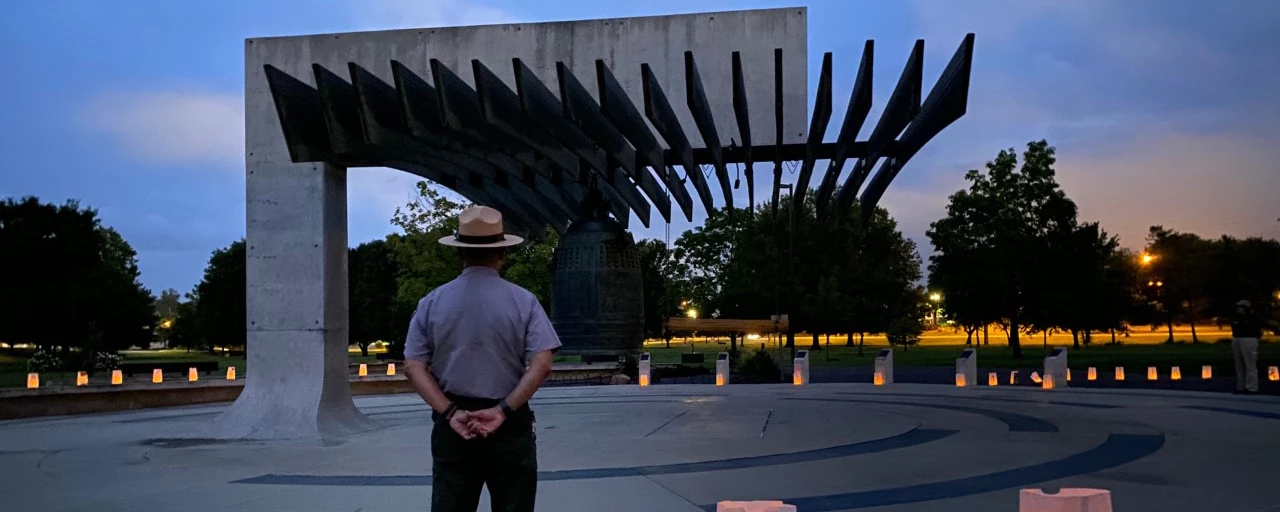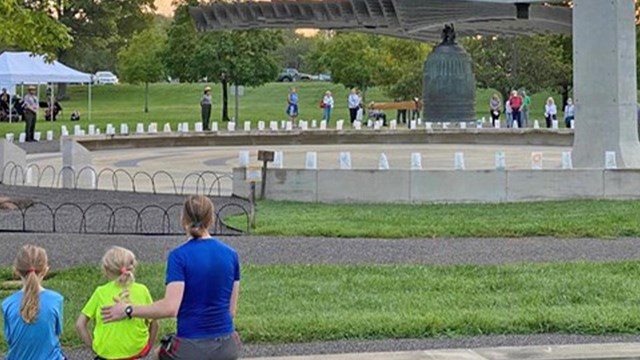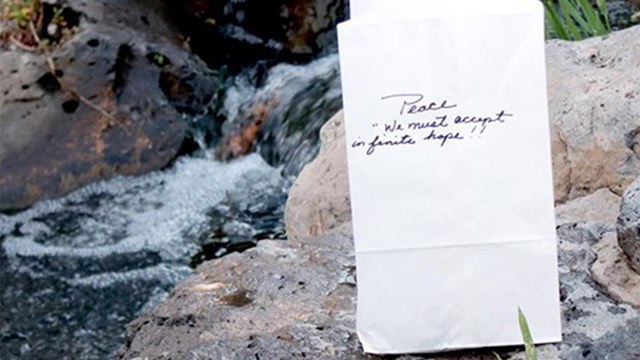
NPS/KLEIN On August 6, 1945, the Enola Gay, part of the 509th Combat Group of the United States Army Air Forces, detonated Little Boy, the world’s first atomic bomb, 2000 feet (600m) above the city of Hiroshima, Japan. This enriched uranium device was the most powerful weapon ever used and killed between 70,000-140,000 people, many of them instantaneously. Three days later on August 9 at 11:02 am local time in Japan, a bright flash of light, far brighter than the sun, illuminated the city of Nagasaki through a cloud-covered sky. Soon, a sharp boom rang out. The United States dropped the plutonium-fueled atomic bomb Fat Man on the city. Shockwaves destroyed the immediate surroundings of the blast’s center. Within 3,000 feet (900m) of the bomb's hypocenter, schools, hospitals, places of worship, and other institutions felt the impacts of the bomb. The blast instantly incinerated everything nearby: people, trees, homes, cars, and buildings. By the end of 1945, more than 200,000 people died as a direct result of these two bombings. In addition to the immediate deaths, tens of thousands more people suffered physical and emotional traumas that have not yet healed. Many complex decisions within the World War II context led to the Manhattan Project and to the development of the world’s first atomic weapons. The dropping of the atomic bombs on Japan and the destructive power of nuclear weapons prompts us to confront the profound choices and consequences of the Manhattan Project, which many still struggle with today. Explore Days of Peace and Remembrance and Messages of Peace to learn about park events that mark and recognize the historical trauma of the atomic bombings of Japan. Articles and other materials in Seeds for Reflection will help you on both a learning and a reflective journey. 
Days of Peace and Remembrance
Learn about the park's commemorative events with Days of Peace and Remembrance. 
Messages of Peace
Hanford, Los Alamos, and Oak Ridge all host events where the public can write messages of peace on luminarias. 
Seeds for Reflection
Start a journey of learning and reflection with these articles and other materials. |
Last updated: May 29, 2025
